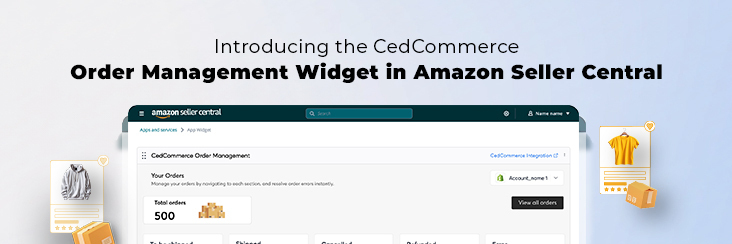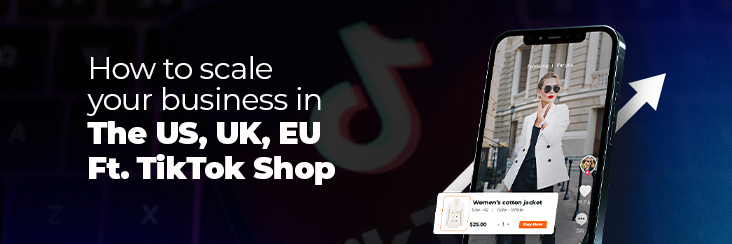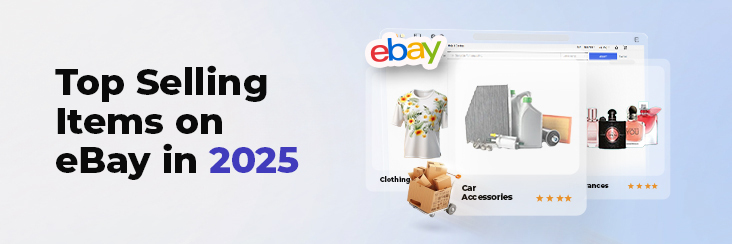Walmart Embraces Amazon MCF: A New Era of Cross-Platform Fulfillment for eCommerce
Walmart Embraces Amazon MCF: A New Era of Cross-Platform Fulfillment for eCommerce
Order fulfillment is integral to online selling. A process that is directly linked to customer satisfaction is never less important. Optimizing it like a pro seller will keep your selling hassle-free and productive.
Order fulfillment is a series of steps that ensure the order received reaches the customer. It takes place in the following order.
The degree of sync between the above steps determines the success rate of an order fulfillment process.
Order fulfillment is a vital process with huge impacts on the bottom line of any ecommerce business. In 2022, customer expectations have shot through the roof in terms of order delivery time with Amazon’s same-day delivery option.
Customers see the item in your store and desire to get it as soon as possible. Now sellers to fulfill the expectations speed up the order fulfillment process. It makes sense to speed up the process, but it alone won’t suffice.
Because without a structured roadmap, it can lead to wrong order picking, misprinted labels, etc.
The business expansion brings in more orders. As a result, order fulfillment becomes a complex job. Hence a systematic approach where all order fulfillment steps are completed with high accuracy is the need of the hour.
It will simplify the order fulfillment as well as speed it up.
Speed and accuracy are the most important metrics in the order fulfillment process. Therefore, it deserves primary focus and constant attention.
A model of ecommerce that requires the merchant to look after everything includes storage, shipping, packaging, inventory and order management, and returns.
Considering the amount of time required to perform all tasks, it seems to be a better choice for small-scale businesses. Moreover, it allows merchants to practice better control over different aspects of order fulfillment.
But, on the downside, the self-fulfillment model is hard to scale if order starts flooding during the festive season or demand shoots through the roof. Hence, this model is profitable for merchants with limited budgets and has another plan to scale the business in the future.
In this model, a third-party fulfillment service takes care of from receiving inventory to order fulfillment and everything in between. As a result, the merchant is saved from fluctuating storage demand owing to demand changes due to the festive season or other inevitable reasons.
8 in 10 Fortune 500 companies are dependent on 3PL either directly or indirectly. Hence, it can be an excellent order fulfillment model
It proves to be a wise choice under the following scenarios
Dropshipping model is very profitable when you are just starting and have minimal knowledge about order fulfillment but don’t want to lose the opportunity to sell online.
Here received orders are notified to the manufacturer, who takes care of the shipment and logistics process. You need not worry about warehouse and order delays.
So, dropshipping is a good order fulfillment option to test the waters. Also, tracking the order can be difficult due to the merchant’s low control over the supply process. As a result, the seller won’t be able to share the delivery location with the customer. Hence, it can be a big hurdle in enabling a smooth customer experience.
It’s a combination of two or more models mentioned above. It can be understood as sticking to self-fulfillment when demand is low, but as the demand rises, 3rd party order fulfillment model is better opted.
It is important to study multiple factors thoroughly to choose the right order fulfillment model for your business After all, an efficient strategy is vital to ensure the order is delivered to the right person at the right time and in good shape.
Analyzing the business data of the last few years will reveal how many orders you are delivering.
Low order volume, like a few hundred orders per month, indicates self-fulfillment is the right choice. It will also be a cost-effective affair.
High order volume means it’s time to opt for 3PL fulfillment because serving orders beyond your capacity is a risk worth avoiding. Moreover, 3PL logistics services expertise in order fulfillment without fail despite the huge order volume.
Also, it will give you ample time to focus on other critical business areas.
The self-fulfillment model will suit your business if you plan to sell only on a single channel (like Shopify) as a single channel can be easily self-managed.
There is a chance of poor visibility about order and inventory status when selling over multiple channels (Walmart, Amazon, WooCommerce, etc.)—managing it all on your leads to the risk of overcomplicating the system.
As a result, order fulfillment becomes a hassle leading to missed opportunities and regrets. Therefore, your business’s best interest is to automate your store for upcoming challenges. It will rule out manual errors and give you a competitive edge.
After all, at some point in time when you plan to scale your business, you need reliable support in the form of robust solutions to sell seamlessly despite huge order volume
The location of order delivery is also a decisive factor in determining the most suitable order fulfillment model.
With customers spread across different locations, it makes sense to split the inventory stocks over several warehouses. It will optimize the order delivery process irrespective of customer location.
Otherwise, self-fulfillment will be better if you serve customers confined to a specific region.
Suppose you plan to sell customized items or something highly fragile or anything that requires special attention to storage and packaging to ensure the product reaches the customer in good shape.
Therefore, a wise option is to opt for a self-fulfillment approach. It will provide better control over the quality and assurance of the item.
Facts reveal that meeting customer demands is important to build trust. Also, the most sellers still struggle to ramp up their order fulfillment capacity. Therefore, having the capacity to manage orders with high precision on a huge scale has no alternatives.
Moreover, these many potential customers are highly unlikely to return for a future purchase at your store if delivery time is too high. Hence, the merchant must fix an unoptimized approach toward order fulfillment before it is too late.
Any order delivery that takes longer than 72 hours is incapable of impressing the customers.
Therefore, it is in sellers best interest to speed up order fulfillment to enable a seamless inventory flow. Here are a few pointers for warehouse optimization to spend minimum time and get the job done with high accuracy.
Ensure the process is clearly understood by the warehouse staff and demonstrated. An exclusive session to guide on tamper-proof packaging will avoid last-minute hassle arising from repackaging Hence, the order fulfillment process will be streamlined and productive with negligible chance of error.
As your business expands, the manual mode of online selling doesn’t suffice. Moreover, you will stress about managing orders beyond capacity, which might impact the bottom line.
But, store automation has got your back covered. It empowers sellers to sell without a hitch to become successful in their domain.
Want To Say Goodbye To The Nightmare Of Missing On Business Growth Opportunities Due To Lack of Optimized Order Fulfillment Process?
Store automation empowers you to sell on the popular marketplace without fear of missing on selling opportunities due to a high number of orders or any other related reasons.
As a pro seller, optimizing your e-commerce fulfillment process is high time before it’s a big problem. Also, the cut-throat competition leaves very little time. Hence, understanding the ins and outs of the order fulfillment process and red flags that point to loopholes in the system presents a bigger and clearer picture.
As a result, we discussed the best measures to counter the problem and open up efficient ways to grab on opportunities that promise to deliver orders quickly and eventually meet the customer’s expectations without burning a hole in your pocket.

Walmart Embraces Amazon MCF: A New Era of Cross-Platform Fulfillment for eCommerce

Order Management Redefined: A Centralized Solution for Amazon Sellers

Maximizing TikTok Shop’s Regional Compatibility for US, UK, and EU Markets

Understanding U.S. Tariffs in 2025: What Sellers Need to Know and Do

Walmart’s Search Algorithm Decoded: How to Rank Higher & Sell More

TikTok Gets a 75-Day Reprieve in the USA as Trump Signals Hope for a Deal

TikTok Shop Introduces Category-Based Benchmarks for Product Listings – What Sellers Need to Know

Amazon FBA vs. FBM: Which Fulfillment Method Is Right for You?

Amazon Launches Another AI Tool for Sellers: AI Generated Product Enrichment

Top 10 Selling Items on eBay in 2025

Amazon launches AI Powered ‘Interests’ Feature to Improve Shopping Experience

Is TikTok Staying in the US? The State of TikTok Ban

Best Buy coming back to the US, Marketplace Relaunch and New Opportunities in Store!

Miravia PrestaShop Connector: Built for Smart Sellers

Walmart Launches “Wally”, AI Assistant For Merchants

TikTok Shop to Start Business in Germany, France, and Italy

TikTok Shop Surges as Americans Spend $700 Annually, Defying Regulatory Pressures

Amazon’s Longest Prime Day Ever: What You Need to Know

eCommerce Growth in the Netherlands: A 5% Surge in 2024 with Bright Prospects Ahead

CedCommerce Launches Shopee & Lazada Integration for WooCommerce on WordPress.com